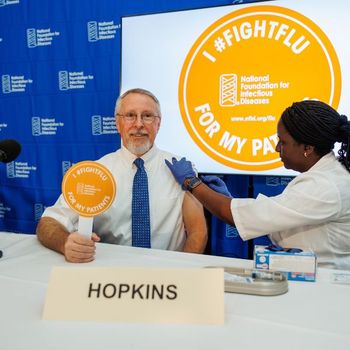
PAHO, CDC Publish Guide on Preparing for Chikungunya Virus Introduction in the Americas
The Pan American Health Organization and the World Health Organization (PAHO/WHO), in collaboration with the Centers for Disease Control and Prevention (CDC), have published new guidelines on chikungunya, a mosquito-transmitted virus transmitted that causes fever and severe joint pain. The Guidelines for Preparedness and Response for Chikungunya Virus Introduction in the Americas aims to help countries throughout the Americas improve their ability to detect the virus and be prepared to monitor, prevent, and control the disease, should it appear.
Â
Hundreds of people who have traveled from the Americas to Asia and Africa in the past five years have become infected with the chikungunya virus. While the virus has not spread locally in the Western Hemisphere, experts say there is a clear risk of its introduction into local mosquito populations. Local transmission could occur if mosquito populations in the United States or elsewhere in the Americas became infected with the virus and began spreading it to people in that area.
Â
From 2006 to 2010, 106 laboratory-confirmed or probable cases of chikungunya were detected among travelers returning to the United States. This compares with only three cases reported from 1995 to 2005. Since 2004, chikungunya virus has caused massive and sustained outbreaks in Asia and Africa, infecting more than 2 million people, with attack rates as high as 68 percent in some areas. With the movement of travelers, local transmission has taken place in areas where the virus was not previously found, including northern Italy and southern France. Nine cases have been reported in the French territories of the Americas since 2006 (three each in Martinique, Guadeloupe, and Guaina). To date, none of the cases has led to local transmission; however, they demonstrate the ongoing risk of introduction and possible sustained transmission of chikungunya virus in the Americas, experts say.
Â
The name chikungunya means that which bends up. The disease is rarely fatal, but the severe joint pain it produces can last for months. There is no specific treatment or commercially available vaccine against the disease. Chikungunya virus is spread through the bite of infected mosquitoes, particularly Aedes aegypti and Aedes albopictus (the Asian Tiger Mosquito). Aedes aegypti, which can also transmit dengue and yellow fever, is common in tropical and subtropical areas of the Americas, including the southern United States. Aedes albopictus is found in more temperate areas of the Americas and is widespread in the southeastern states and East Coast of the United States.
The broad distribution of mosquitoes capable of spreading chikungunya virus, coupled with the fact that people in the Americas have not been exposed to chikungunya virus, places this region at risk for the introduction and spread of the virus, write the authors, Otavio Oliva, PAHO advisor on viral diseases; José Luis San MartÃn, PAHO advisor on dengue; and Roger S. Nasci, chief of the Arboviral Diseases Branch at CDC.
Â
Chikungunya-infected travelers continue to bring the virus to the Americas, including the United States, says Nasci. These guidelines provide the information needed to develop a comprehensive regional plan for rapidly detecting and, hopefully, reducing the potential impact of chikungunya virus in the Western Hemisphere.
Â
Only through coordinated, strong responses to an introduction of the virus can we expect to avoid the establishment of local transmission, says Oliva.
Â
To download the guide, Preparedness and Response for Chikungunya Virus Introduction in the Americas,
Â
Â
Â
Newsletter
Stay prepared and protected with Infection Control Today's newsletter, delivering essential updates, best practices, and expert insights for infection preventionists.






